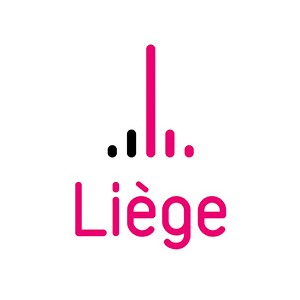C. Willemsen : The Rails
Christiane Willemsen (Liège, 1935)
The Rails, 1977
Oil on panel, 95 X 100 cm
Musée des Beaux-Arts de Liège, Legs Paul Dony, LPD 0052
Christiane is one of those discreet artists who don't like much light, except for the light in her studio, and who put all their energy into painting. Painting above all!
Her exhibitions are few and far between and the literature about her is rather laconic. An interview with the artist was still the surest way to find out about her career. This exchange made it possible to sketch out the contours of a biography and the artist's views on her work.
The artist
Christiane Willemsen was born on 5 January 1935 at her parents' home in the Chartreuse district. From an early age, her attraction to the world of art was obvious. It was therefore quite natural for her to enrol at the Royal Academy of Fine Arts in Liège after leaving secondary school in 1952. First of all, she studied drawing under the auspices of the teacher and artist Henri Brasseur, but also sculpture under the guidance of Marceau Gillard.
Drawing held his attention and became, over time, his entry point to painting. With the encouragement of various teachers, she then embarked on this path without ever leaving it and focused on the oil technique. She then became a drawing teacher at the Royal Academy of Fine Arts in Liege.
Henri Brasseur had a great influence on her work. It therefore seems obvious that Christiane followed in her master's footsteps by adopting a rather realistic vein of figuration. However, this realism is tempered by a supernatural, almost fantastic atmosphere to which is added a particularly refined use of colour.
Like Brasseur, Christiane is immersed in her time. Although, according to her, both of them do not claim to belong to any particular artistic movement, she admits that the emerging Pop Art developing at the end of the fifties in the United States had a clear influence on their work.
Later, she began to paint landscapes with subtle colours that still retain this enigmatic atmosphere.

« The Rails »
Do not rely on the artist to decode the image. There is no question of locating and identifying the place and the character of 'Rails'. The artist concentrates above all on the protagonist. It is he and what he evokes in the viewer that counts.
The unknown person in "Rails" is anonymous. He is the "He" of impersonal sentences. He is anyone, but he is also everyone.
"He" is not waiting for anyone! It is the artist who says so. He crosses the railway tracks with confidence. His goal? A better place elsewhere or rather, as Christiane thinks, the illustration of this ordinary maxim that we have all, one day, whispered to ourselves: "The grass is greener elsewhere". Decidedly, the painter invites us to travel, to take the road.
However, there remains an elusive equivocation in the representation. Without really knowing why, we can guess if not an inconsistency, at least a discrepancy in realism. The scene seems real and unreal at the same time.
The mysterious man crosses the rails from one side to the other without caring about anything other than what is driving him. Bound by his idea, he gives up following the route that the railway tracks lay out for him. In short, he refuses to conform. Perhaps this is precisely what makes the realism of the scene seem out of place?
By being where we don't expect him to be, the artist adds a poetic dimension to an apparently ordinary scene and evokes a reality of which we haven't perceived all the refinements. If we were not afraid to confine his work to a reductive term, we would be tempted to describe it as "supernatural realism".
But let us leave the final word to the viewer, as the painter suggests. It is up to them to complete the story and make sense of the "rails".
So what do you think this work is about and where is this man going?
Henri Brasseur (Liège, 1918 – 1981)
The Olympic shooter, 1964
Oil on paper mounted on novopan, 193 X 148 cm
Musée des Beaux-Arts de Liège, AW 1696

Grégory Desauvage
Curator - Musée des Beaux-Arts de Liège
La Boverie



